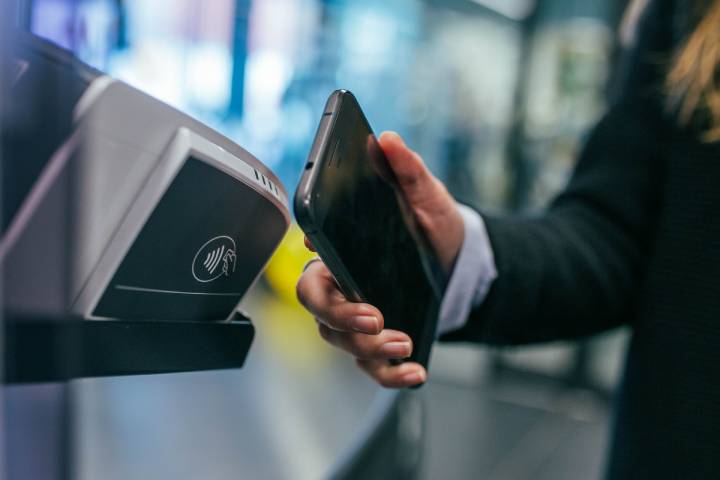The COVID-19 pandemic contributed significantly to the challenges in 2020, but the year 2021 took things to the next level. It’s a wonder the industry survived the past 12 months, given labor shortages, supply-chain disruptions, and rising prices. Its existence shows how vital technology has become.
Eighty-seven percent of restaurant owners said their business has survived because they adopted digital signage technology over the last two years. In 2022, more restaurant operations will embrace new and more robust technology, despite many factors no one can predict. The following are three ways restaurant technology will change this year.
1. The standard will be contactless
COVID accelerated digital adoption in hospitality, just as it did in many other industries. Digital menus are now the norm, and guests have grown accustomed to QR-codes. Customers are handling a growing portion of running a restaurant – from ordering to paying. Operators dragging their heels will find it hard to survive in the wake of the pandemic.
“Many consumers appreciate the new normal” because it allows them to take control of their dining experience. While many of these innovations emerged due to the pandemic, consumers’ desire for convenience will keep them in existence. By 2022 and beyond, restaurants will need flexible and reliable first-party contactless capabilities.
2. Loyalty programs that give guests a reason to return
Food prices have risen faster than grocery store prices in the past few years. The USDA forecasts a 1.5%-2.5% increase in food prices at home and a 3%-4.0% increase in food prices away from home for 2022.
Restaurants’ post-pandemic recovery could be threatened by this looming discrepancy, which could make eating out less appealing than dining at home.
How can restaurant operators retain and win back customers in an era of rising prices and economic uncertainty? Patrons can be rewarded for their loyalty with incentives. A study of over 1,500 American consumers found that 69% of respondents cited loyalty programs as a reason for frequenting a restaurant more often. That’s smart.
Pay-at-the-table solutions enable restaurants to directly integrate loyalty and reward programs into their checkout processes. Through an easy-to-use self-service interface, diners will be able to collect and redeem rewards while paying their bill automatically. Since many restaurants are operating with fewer employees, this seamless approach does not place additional burdens on employees since customers can pay, redeem points, collect rewards, and go without a staff member’s help.
It might be cheaper to eat at home in 2022, but loyalty and reward programs can keep customers coming back if they feel empowered and appreciated.
3. Diners should expect a more self-directed experience
Many restaurants embraced contactless technology throughout 2020 and 2021 due to the COVID-19 pandemic. Some traditional dining touchpoints have been transformed with mobile technologies such as QR code digital menus, self-ordering, and self-payment.
Contactless technology elevates the dining experience for many guests, but people prefer options as much as convenient. When paying and ordering, guests want options. Others would prefer to interact with staff rather than using their phones or the tablet built into the restaurant.
It is unlikely that technology will ever completely replace human servers, and diners would not want that to happen. Many diners still value the human element when dining out. Since customers are essentially co-piloting ordering and paying, hospitality workers can build relationships with guests rather than logistics. It can result in higher sales for the operation and bigger tips for the servers.
Guests aren’t looking for a cold, contactless experience. Sure, they want convenience but also want to feel connected. The key to restaurants’ success in 2022 will be allowing guests to self-serve with the option to not if they prefer.
Tech Trends
Related posts
Leave a Reply Cancel reply
Hot Topics
Categories
- Ads (5)
- Animes (25)
- Artificial Intelligence (AI) (35)
- Augmented Reality (AR) (10)
- Automotive (9)
- Bitcoin (16)
- Blockchain (24)
- Business (244)
- Business Intelligence (3)
- Cloud Computing (23)
- Computer (128)
- Concrete Technology (1)
- Cryptocurrency (10)
- Cybersecurity (42)
- Data Science (9)
- Database (4)
- DevOps (6)
- Digital Marketing (76)
- Digital Workplace (14)
- Ecommerce (1)
- Education (28)
- Electric Vehicle (EV) (1)
- Electronics & Hardware (17)
- Entertainment (42)
- Fabrication (3)
- FAQ's (1)
- Finance & Marketing (47)
- Gadgets (35)
- Games (8)
- Gear (29)
- HTTPS (1)
- Industry (46)
- Information Technology (90)
- Internet (413)
- Internet of Things (IoT) (41)
- Job (25)
- Machine Learning (6)
- Marketing (92)
- Mobile Apps (21)
- Movies (11)
- Natural Language Processing (6)
- News & Trends (109)
- Programming (4)
- Science & Technology (235)
- Security (81)
- SEO (56)
- Services (36)
- Social Media (73)
- Software (99)
- Sports (1)
- Technology (306)
- Telecom (6)
- TikTok (5)
- Tours & Travels (9)
- Uncategorized (11)
- Virtual Reality (VR) (7)
- VoIP (4)
- Web Technology (42)
- Workforce (17)
- Workspace (6)



Stay connected